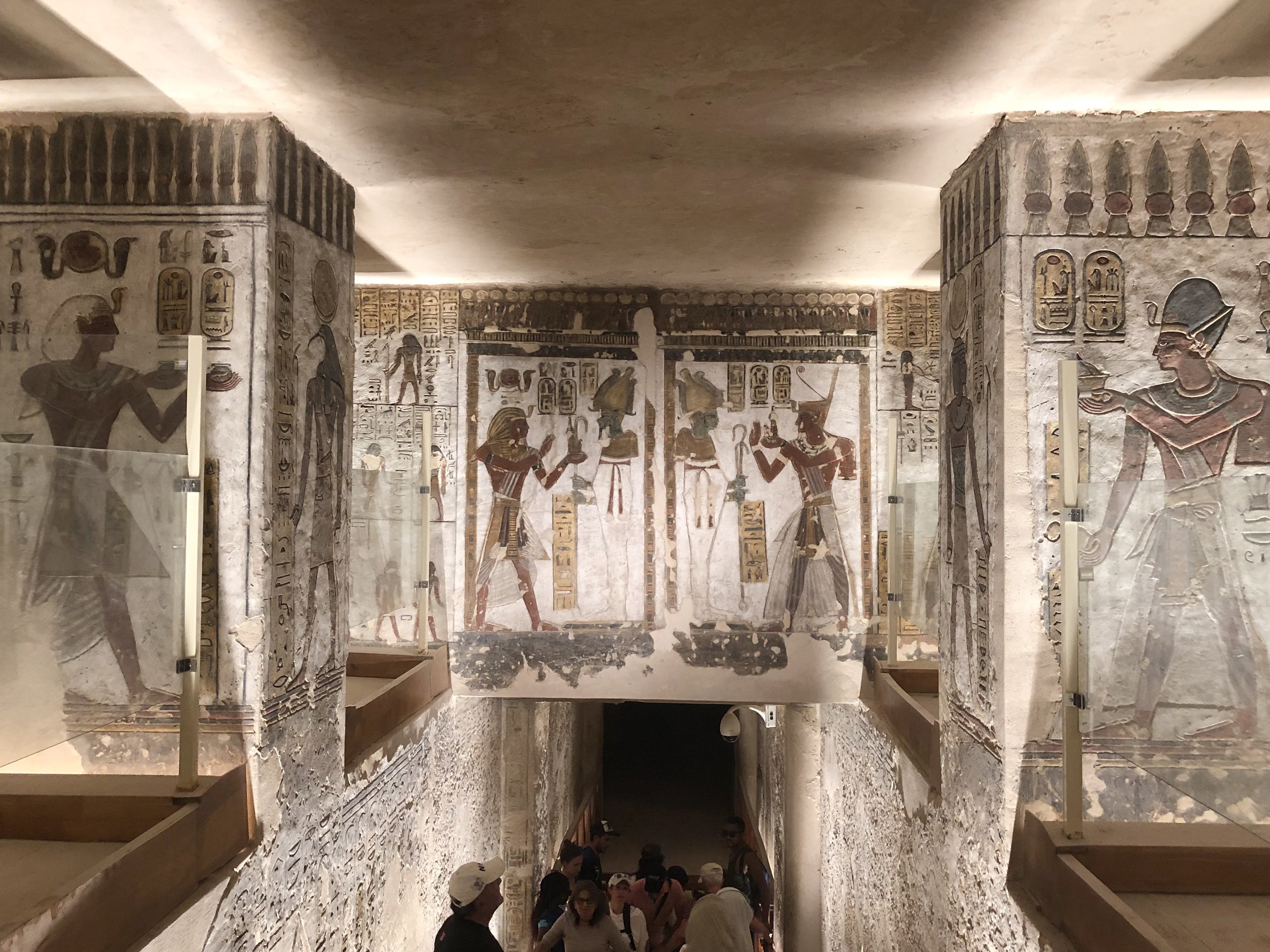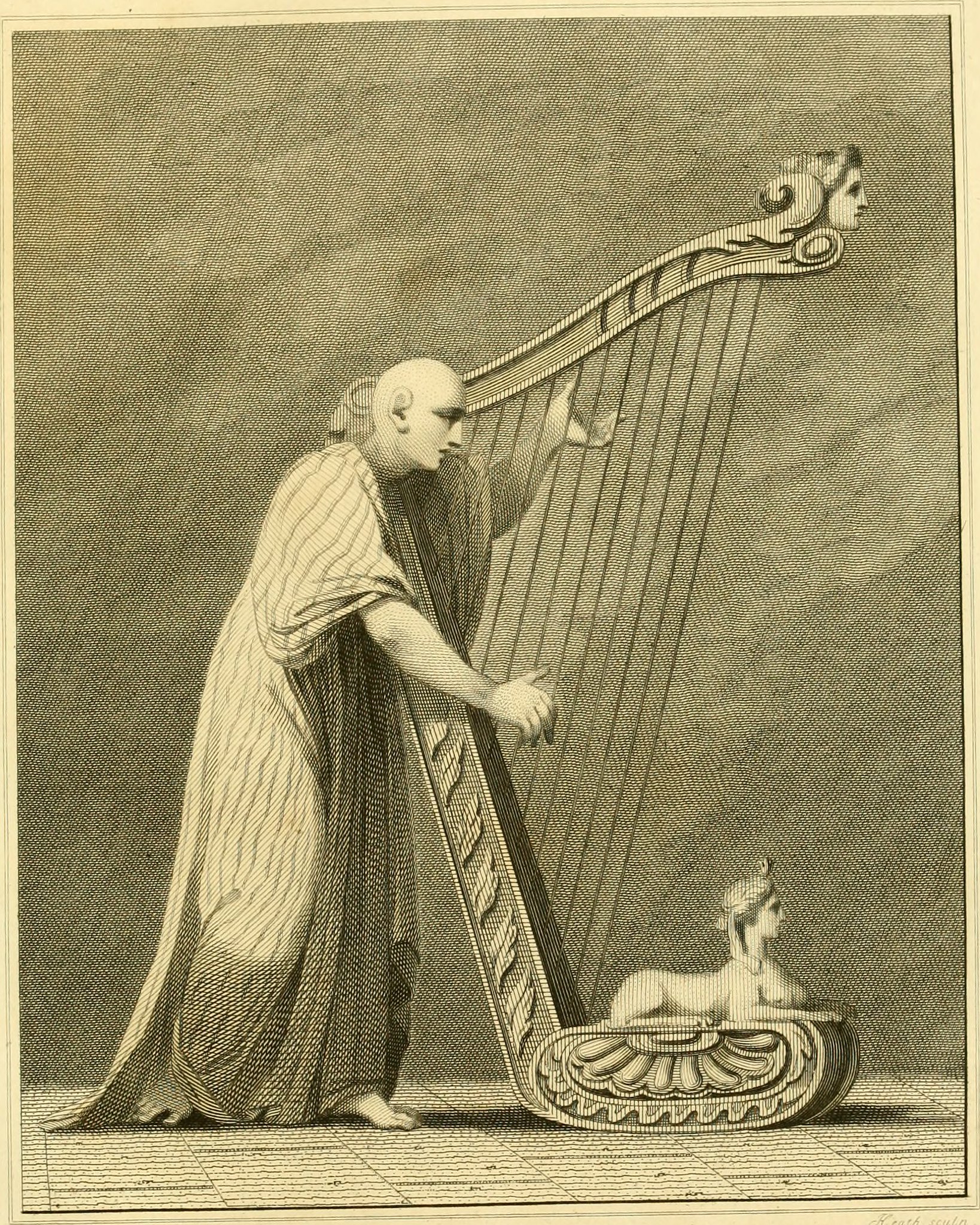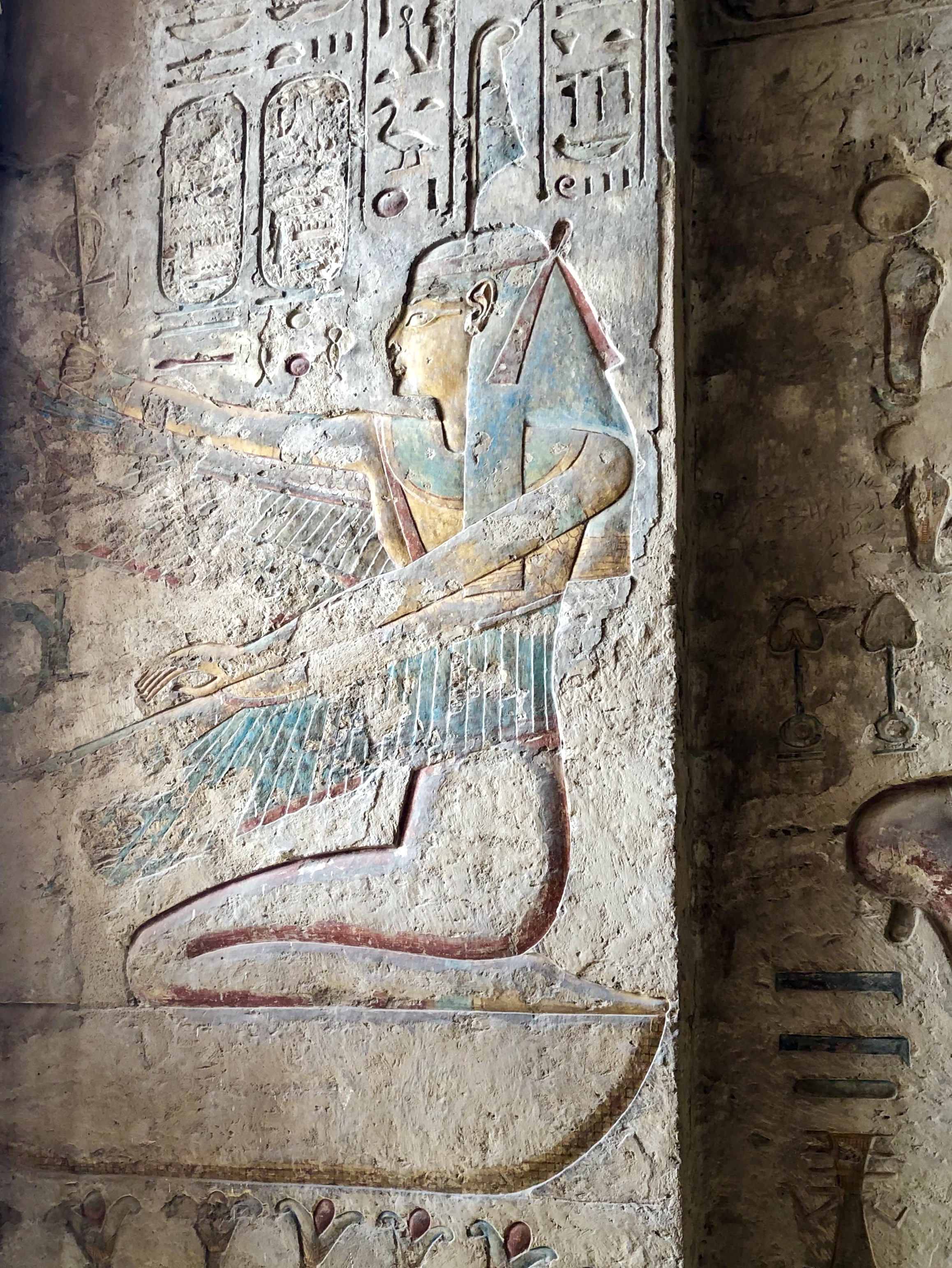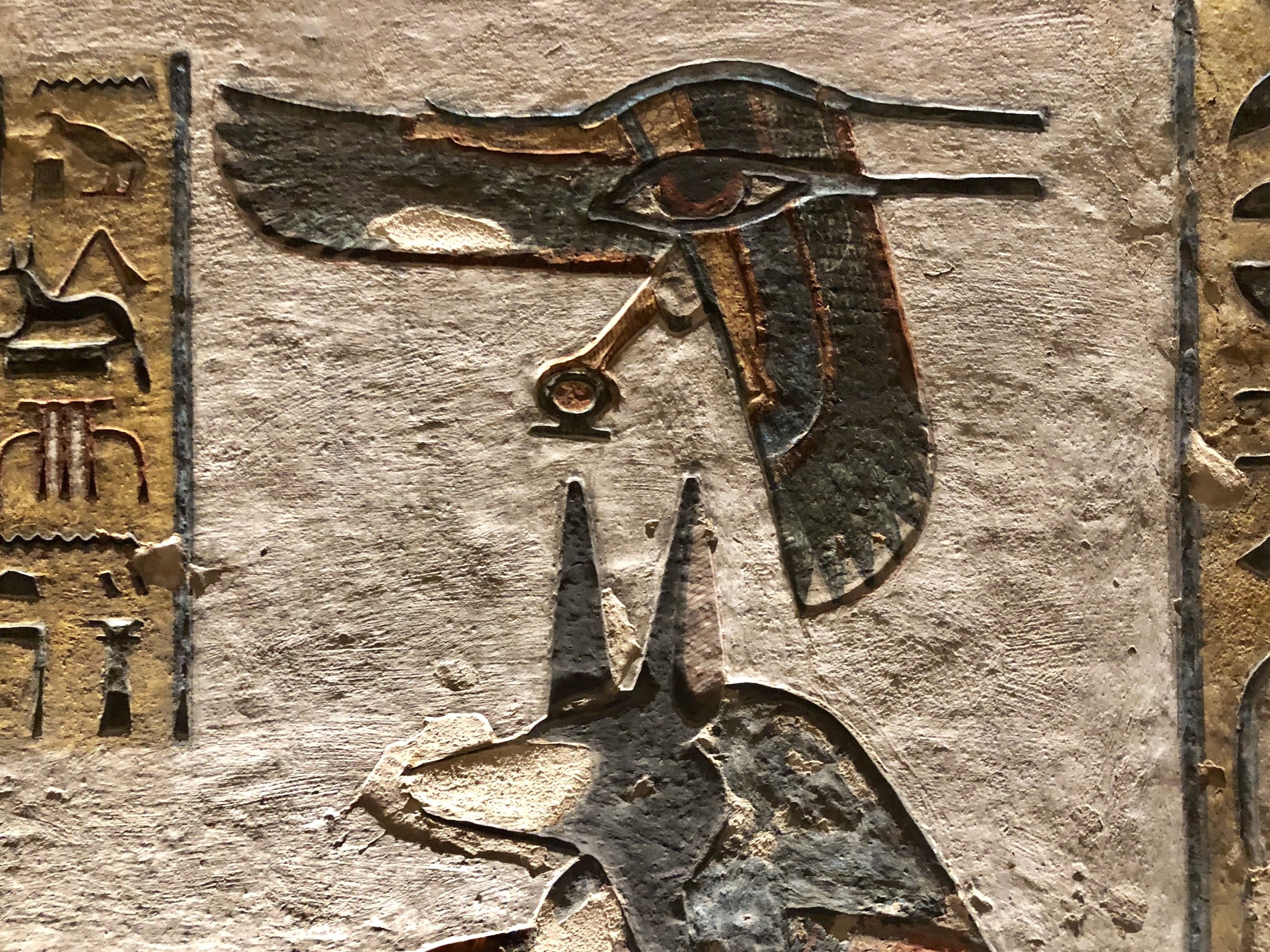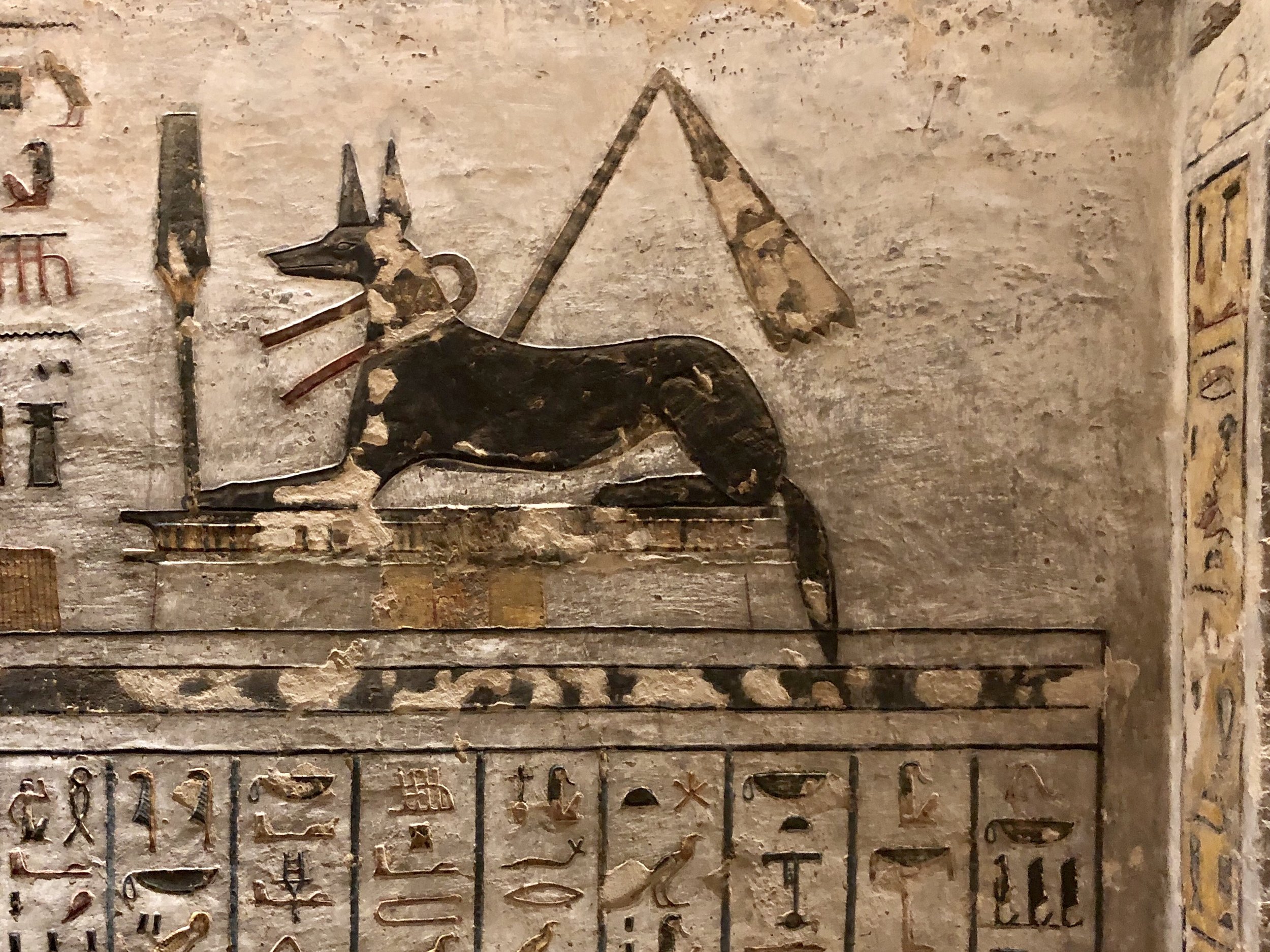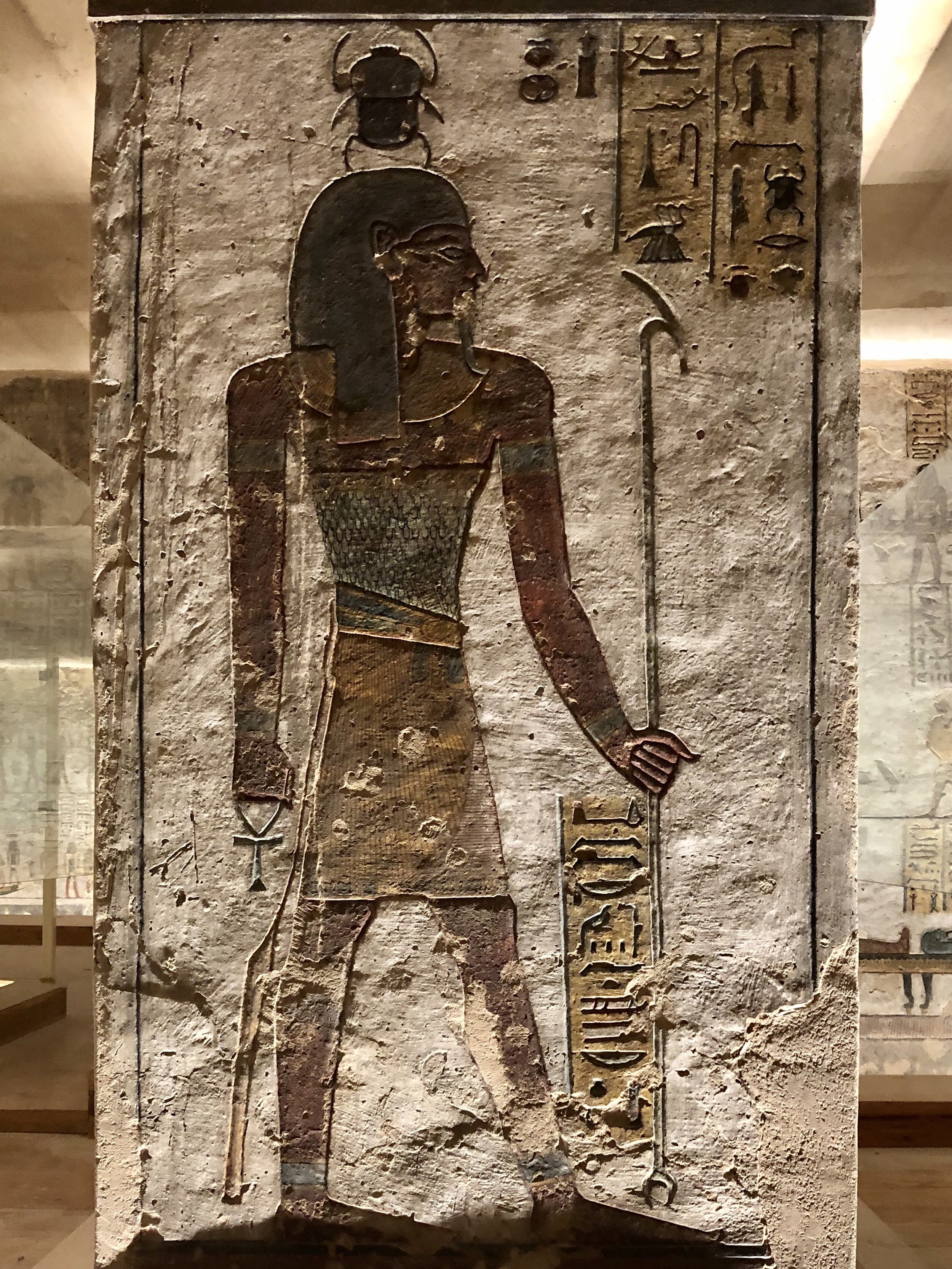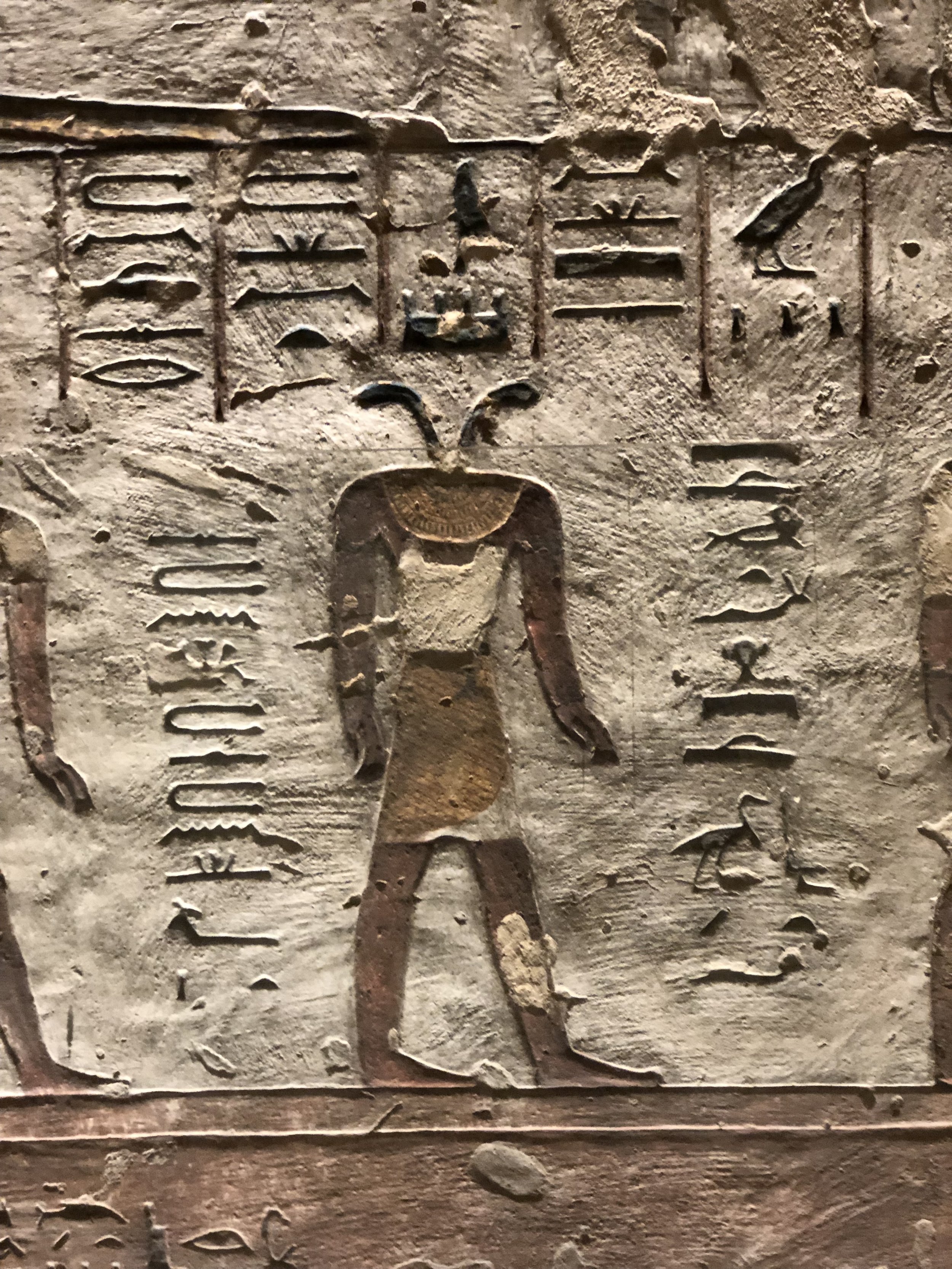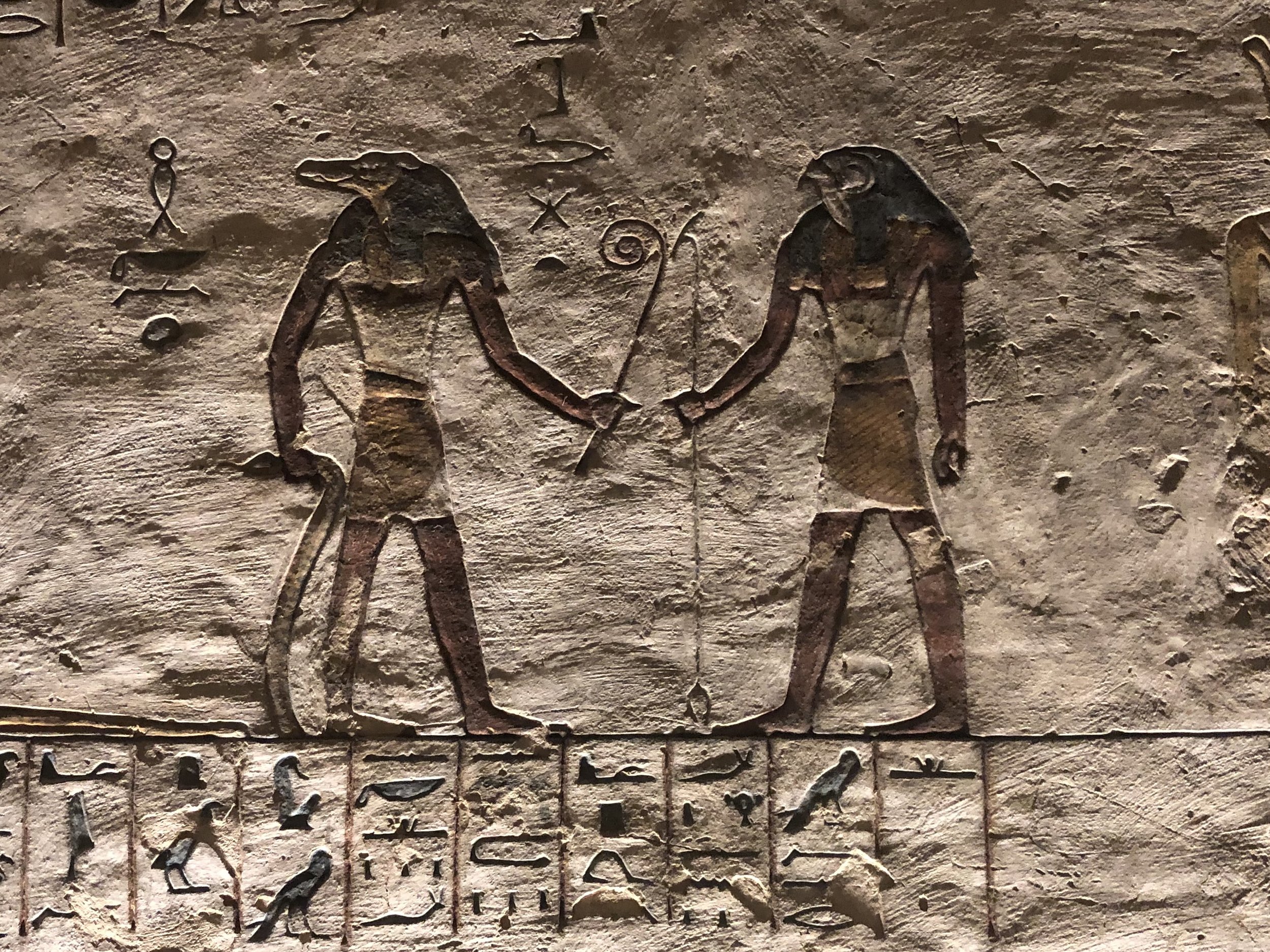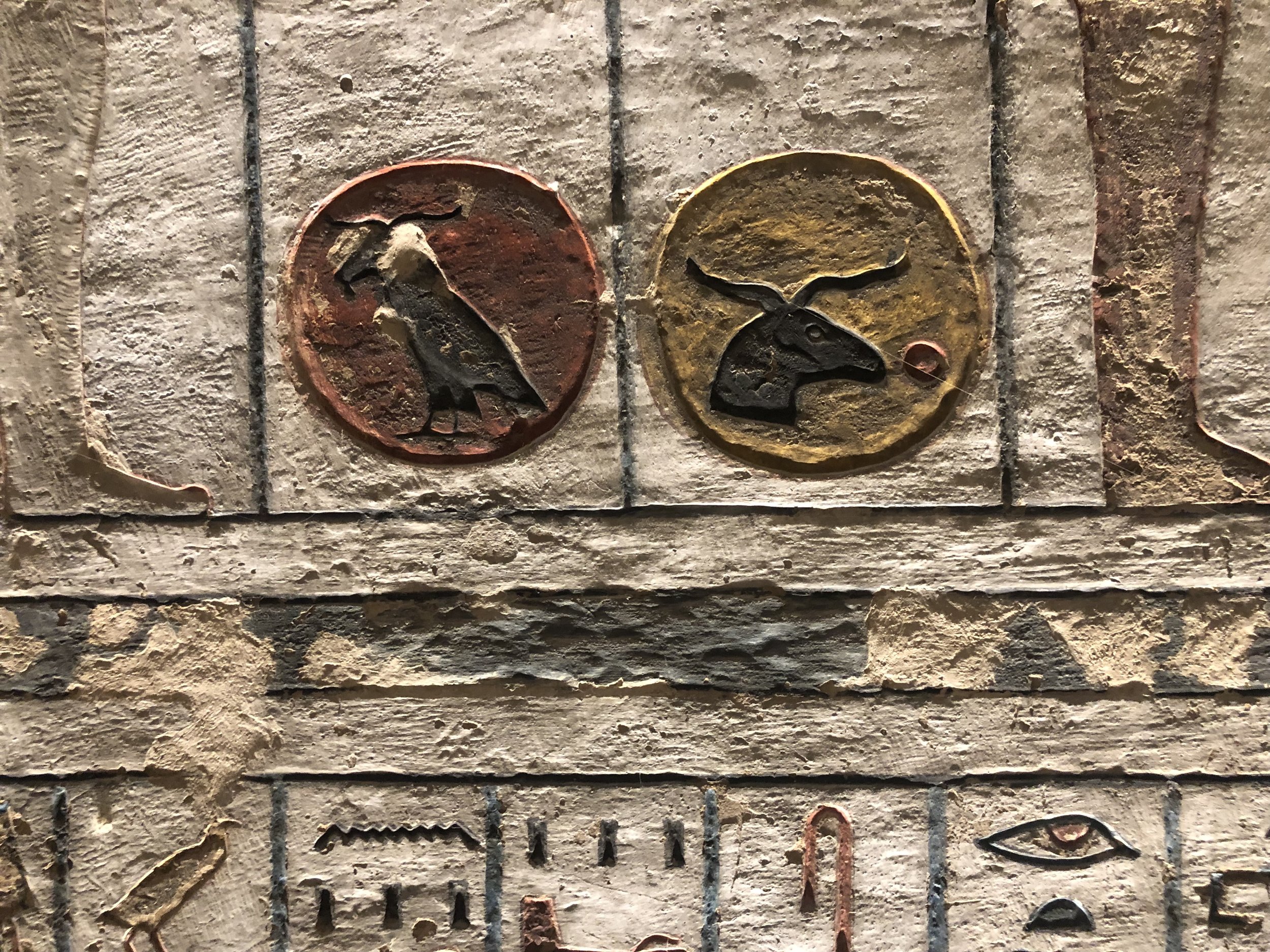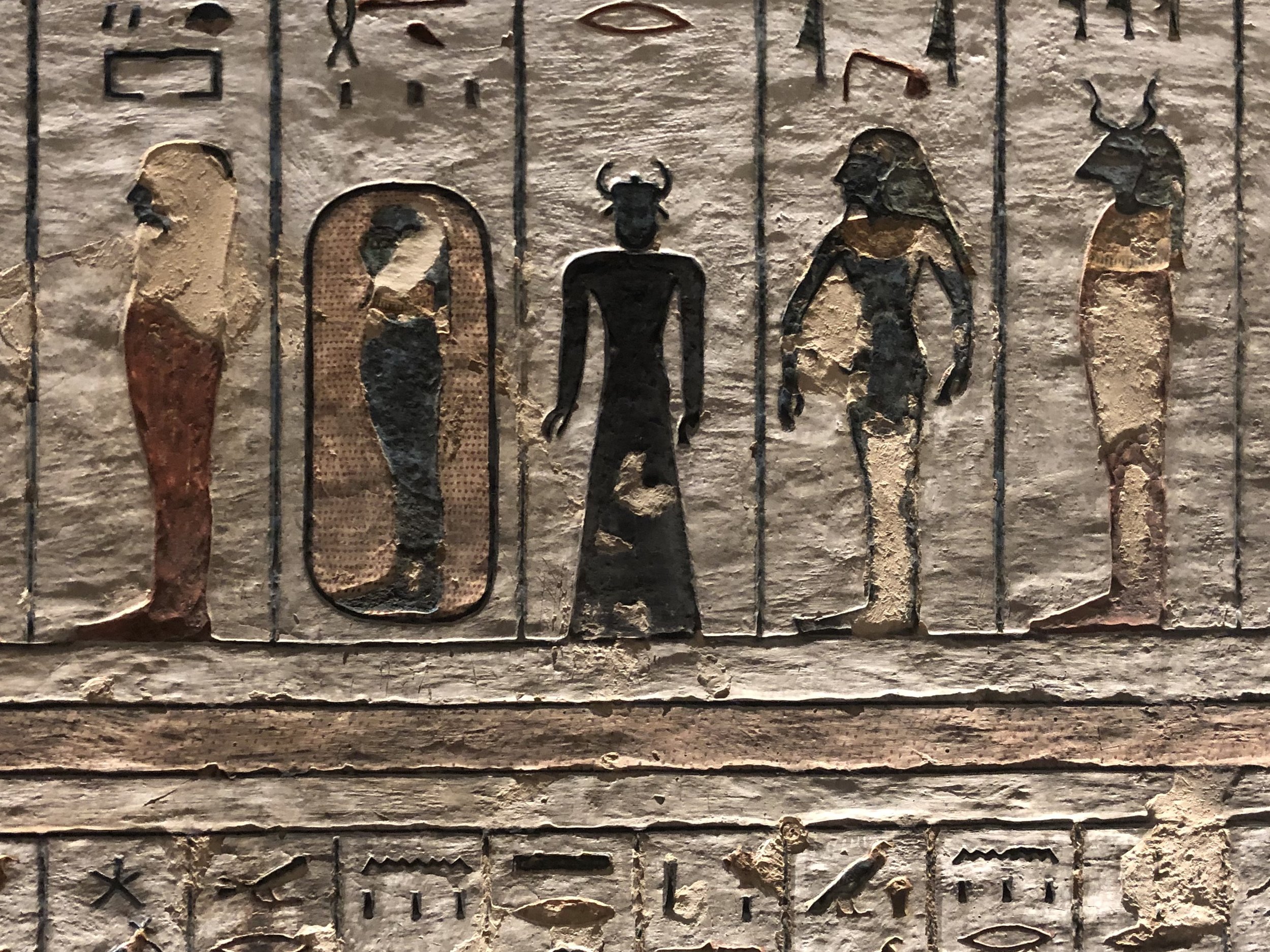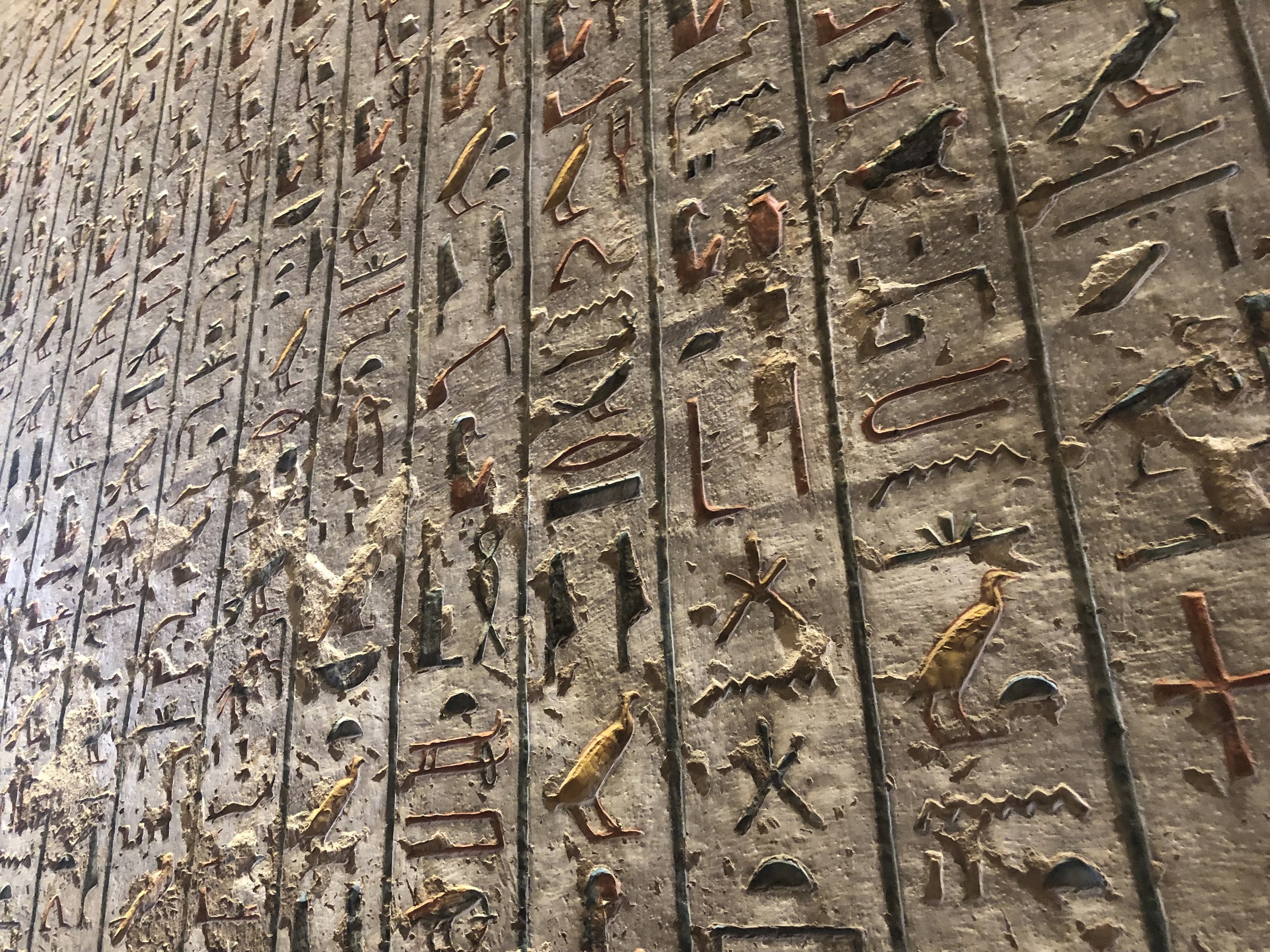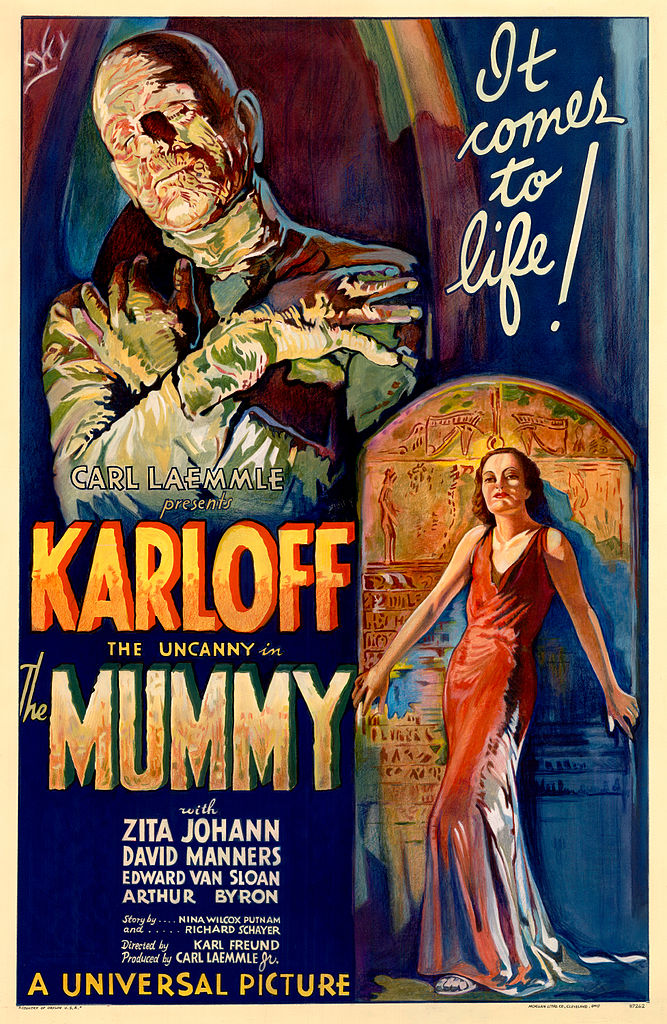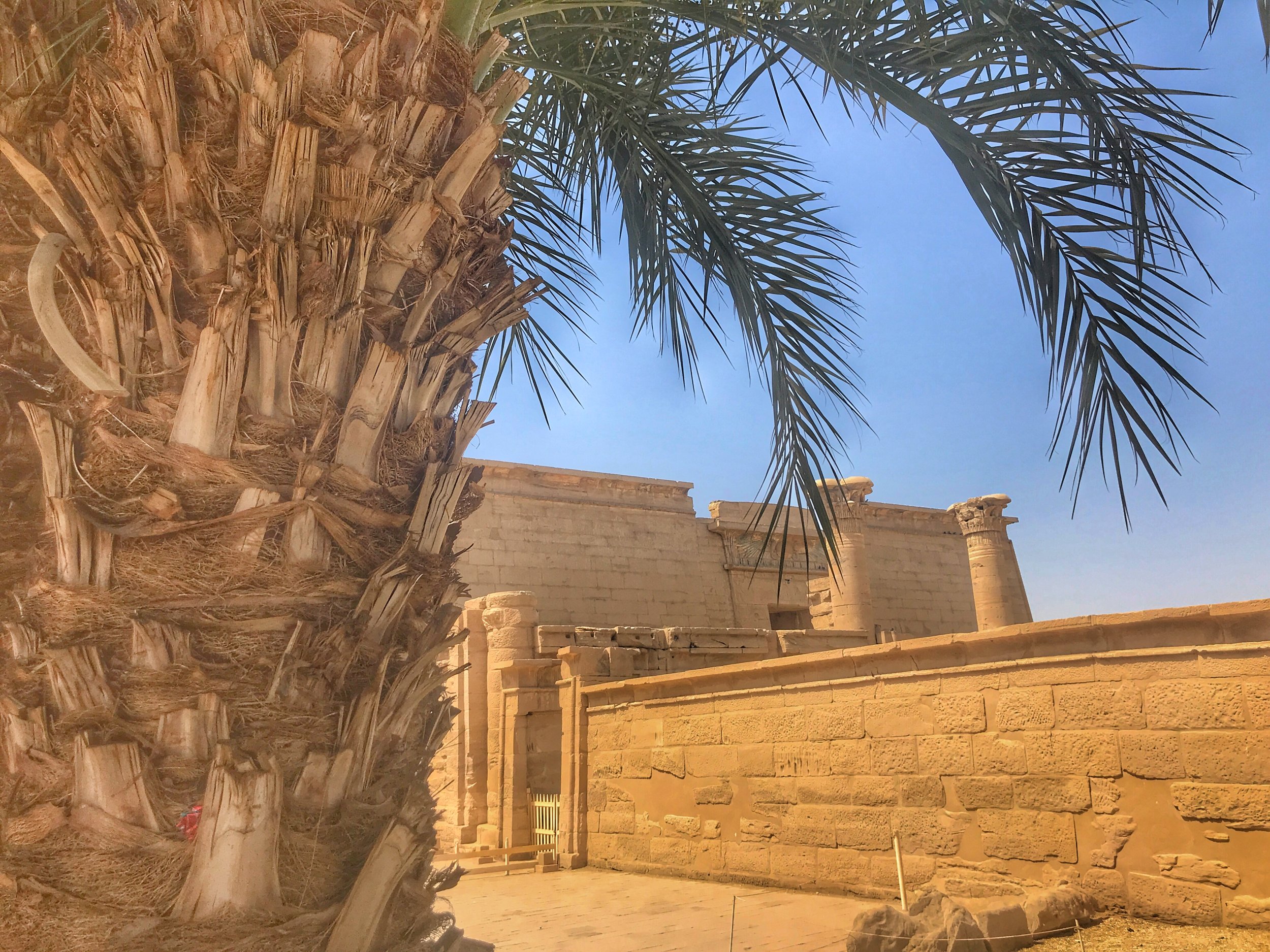Explore KV11, one of the largest tombs in Luxor, and learn why it takes a strange and sudden turn.
Most tombs have a long, straight corridor — but this one takes a slight turn because it ran into a neighboring burial site!
Egypt is a country steeped in myth and history, and one of the most interesting places to see this can be found on the West Bank of the Nile River — the direction of the setting sun and the underworld of Ancient Egypt. Known as the Valley of the Kings, it was part of the capital city of Thebes and was where the tombs of the deceased New Kingdom pharaohs were built.
As mentioned in an earlier post on the Valley of the Kings, the admission price (160 Egyptian pounds, or about $9) includes three tombs. We had read about the richly decorated tombs filled with spells and scenes from the Book of the Dead and couldn’t wait to see them with our own eyes.
“Ramesses III’s mummy was so unappealing that it became the model for Boris Karloff’s character in the 1930s film “The Mummy.””
Rasha from Egypt Sunset Tours arranged our itinerary, including our guide and driver, and could not have been more accommodating and flexible. One of the tombs included on our visit was KV11, that of Ramesses III. (These kings are sometimes spelled Ramses or Rameses, though we’ve gone with the most widely used by Egyptologists, Ramesses.)
The pharaoh is welcomed to the afterlife by the falcon-headed god Horus.
Ramesses III, the Great Bull
Usermaatre-Meryamun, or Ramesses III, was the second ruler of the Twentieth Dynasty and considered to be one of the last great pharaohs of the New Kingdom, before Egypt plunged into chaos. Being king meant that he had five royal names. His Horus name, which he adopted upon taking the throne, was something along the lines of Kanakht Asnesyt, which translates to the Great Bull, Great of Kingship. (Names typically have multiple spelling variants after transliteration, aiming to preserve sound and given differences in the languages’ sounds and writing systems.)
The walls of the tomb are covered with spells from the Book of the Dead.
Ramesses III chose to finish the tomb his father abandoned.
Although Ramesses III’s reign was fraught with conflicts, his troops secured the empire’s borders against foreign invasion attempts by Libya and the mysterious Sea Peoples of the Mediterranean (depicted on the walls of his mortuary temple and royal palace, Medinet Habu), earning him the reputation as a mighty warrior king.
Using Ramesses II as his model, he took a harem of many wives — though they would ultimately lead to his demise. The god-king’s 31-year reign ended when he fell victim to an elaborate assasination plot known as the Harem Conspiracy. A minor wife, Tiye, hatched a plan to have the monarch killed and seize the throne from Ramesses’ designated heir for her son, Prince Pentaware.
The assailants succeeded in killing Ramesses III — the throat of his mummified remains reveals that his throat was slit — but failed in its goal of crowning Pentaware. Queen Tiye, Prince Pentawere and dozens of others were caught and put on trial.
The mummy of Ramesses III. The wrappings hid the fact that the pharaoh’s throat was slit when he was assassinated during a massive coup.
Fragmentary documentation known as the Judicial Papyrus of Turin details the court trial that followed, including the accusations and punishment against its multiple conspirators. How the law dealt with Queen Tiye is unknown, but Pentawere was found guilty and forced to commit suicide.
The four-pillared hall leads into the burial chamber.
Repurposing His Father’s Abandoned Tomb
The plan of KV11, the designation of the royal tomb of Ramesses III, is comprised of an inclined entrance passage with steps cut into the floor, a descending central corridor, a pillared hall and A burial chamber. Its first three corridors were started by his father, Setnakhte, the last king of the Nineteenth Dynasty, but abandoned when it collided with KV10, the earlier tomb of the deposed pharaoh Amenmesse while excavating the fourth corridor. The cartouches of Setnakhte were later plastered over and reinscribed with the name of Ramesses III.
Not wanting to waste the resources already put into excavation, Ramesses III resumed work on the abandoned tomb, realigning the axis to the right and extending the corridor. The tomb is one of the longest in the valley, measuring a total of 180 meters, or 262 feet. The relatively straight axis represented the sun god Ra’s western descent into the tomb and his ascension in the east.
Scottish explorer James Bruce took some artistic license in his drawing of a scene from Ramesses III’s tomb in his series Travels to Discover the Source of the Nile
Tomb of the Harpers
This tomb contains colorful well-preserved relief scenes, with the first two corridors depicting the 74 manifestations of Ra. Ramesses III added small side alcoves to the second corridor, one of which contains a relief of two blind harpists. Scottish explorer James Bruce drew attention to it with the publication of his illustrated five-volume Travels to Discover the Source of the Nile, which features a beautiful but inaccurate take on the scene. Worried for his safety, Bruce quickly sketched one of the harpists and later drew it from memory, giving it a Victorian flourish, and for a time, KV11 was referred to as the Tomb of the Harpers.
Just some of the 74 depictions of the sun god Ra seen in the tomb
A narrow yellow ribbon runs through the center of the ceiling and contains additional spells and funerary texts from the Litany of Re.
On the doorframe between the second and third corridors are symbols of a different kind: two knots of Isis with djed pillars (the symbolic backbone of Osiris, meaning stability) and ankhs (symbolizing life) holding animal-headed was scepters (power).
The fourth corridor rises to clear the underlying chamber of KV10, descends to a shallow well shaft and continues on to a pillared hall with another passage leading to a pair of anterooms and the burial chamber.
On the wall here, Ramesses III offers incense before the seated god Ptah-Sokar-Osiris. He holds three vessels, their contents spilling onto the platform on which the god sits. Behind the triple deity stands the goddess Isis. The pharaoh’s titles are listed in front of him: Ramesses the ruler of Heliopolis and his coronation name, which translates to “The Justice of Ra, Beloved by Amun.”
The identification of Rameses III with the greatest of gods, Amun, ensured that he would experience endless regeneration, a necessity for his eternal well-being in the afterlife.
In the fourth corridor is a scene from another funerary text, the Amduat, depicting a goddess with the Red Crown of Lower Egypt, standing in front of a guardian serpent with four legs and a human head. The narrative illustrates the nocturnal voyage of the sun god Ra-Horakhty, who travels through the underworld from the time when the sun sets in the west to when it rises again in the east. The underworld, as the Ancient Egyptians saw it, is divided into 12 hours of the night, each representing different allies and enemies for the pharaoh/sun god to encounter. The iconography and symbolism here is wonderful.
Some of the carvings depict the monsters and deities of the underworld.
Adding elements of temple architecture, Ramesses commissioned a four-pillared hall decorated with scenes and texts from the Book of Gates that depict him and various deities on their nightly journey through the netherworld — the fifth hour on the left side and the sixth hour on the right. Also on the right is a side chamber with scenes where Ramesses III is led by the gods Thoth and Horus and offers ma’at (the concept of justice and balance) to Osiris. A double scene on the rear wall immediately before the burial chamber shows the king making offerings to Osiris.
In the burial chamber, the name of the king was inscribed within a disk formed by the entwined bodies of two serpents. By placing his name within this device, the king identified himself directly with the solar deity and joined his cyclical daily journey.
Sadly, the quartz sarcophagus was removed by Italian explorer and former circus performer Giovanni Batista Belzoni and currently resides in the Louvre in Paris. Its lid is in the Fitzwilliam Museum in Cambridge, England. Prior to the establishment of the Egyptian Antiquities Service, it wasn’t uncommon for unregulated foreign excavators digging in the valley to ship statuary and crates filled with tomb friezes back to Europe, where they found their way into collections such as that of the Louvre and the British Museum. The empty burial chamber ends with an anticlimactic darkened hallway and gate.
The Inspiration for Karloff’s Mummy
French Egyptologist Gaston Maspero is credited with finding a cachette of royal mummies, including that of Ramesses III. But it was actually discovered by accident, when a straying goat fell into a concealed tomb shaft in Deir el-Bahari. The unwrapped mummy is now on display in Cairo’s Egyptian Museum, and its features were considered so unappealing that they found fame as the model for Boris Karloff’s character in the 1930s film The Mummy. –Duke

